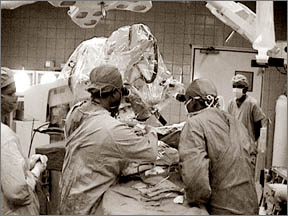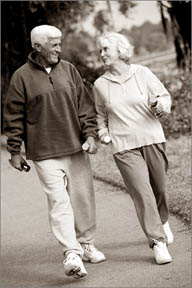|
observer |
|
|
|
|
|
OTHER LINKS |

|

|

|
|
Advanced neurosurgery techniques, great mental solaceThe first reported case of neurosurgery was in the CMJ of 1889, a compound fracture in the frontal region of the skull, operated by E. E. Modder, a colonial surgeon at the Kegalle hospital, and the significant factor in the case was the removal of a lipo meningioma from the left rolandic area by J. H. F. Jayasuriya 1936.
President of Neurosurgeons Association Dr. Abeysuriya made the following comments to the Sunday Observer. Dr. Shelton Cabraal was a Founder Member of the Department of Neurosurgery in Sri Lanka. The first Neurosurgery Unit was set up in 1956 at the then General Hospital Colombo, with 12 beds which in later years became the centre for undergraduate and postgraduate trainees. The first trainee under Dr. Cabraal was Daival Weinman and with the completion of his post graduation in 1962, he became the second Neurosurgeon in the country. Further expansion of this unit was done in 1959 and as a result the entire 4th floor of the five storey building at the General Hospital which is adjacent to the present Neurology Ward unit was allocated for Neurosurgery in 1959. The major step towards development was the establishment of a Neurosurgery unit by Dr. Subramaniam at the Jaffna Hospital in 1960 and it marked the first step towards this decentralisation of Neurosurgery in Sri Lanka. On completion of my general surgical training I joined the neurosurgery unit in 1962, as a Registrar and later with my post-graduate degree in England I assumed duties as a Neurosurgeon at Neurosurgery unit at the National Hospital, Colombo. For a short spell I performed surgeries in the Colombo unit, and with the need of further expansion of Neurosurgery facility to other areas, I volunteered to move on to the Teaching Hospital, Kandy. With the help of hospital staff and the Ministry of Health I was able to establish a neurosurgery unit at the Teaching Hospital Kandy, in 1972. The second unit at the National Hospital "The Institution of Neurology" was an outright purchase by the public through the Buddhist Congress with Dr. J. B. Peries who was instrumental in getting this Unit. However further development of neurosurgery in Sri Lanka faced a severe setback from 1990 to 1993, during this short period four Neurosurgeons left the unit due to some internal disputes. As a result Dr. Lal Gunasekara, Dr. Selladorai and Dr. Gunanandan left the country. In addition to these woes Dr. Subramaniam passed away. These chain of events hindered the further development of neurosurgery. At that time we generally used angiography for detection of brain disorders. The first CT scanner was set up at the National Hospital in 1988, followed by MRI scanner with financial assistance from Presidents' Fund and public donations. The MRI scanner was set up under the supervision of Dr. Colvin Samarasinghe. However with in a short span of time two more MRI scanners were set up one at Karapitiya and the other one at Kandy. The CT scanners are now widely available in most of the teaching hospitals in the country, Dr. Jayasuriya elaborated. The Secretary to the Ministry of Health, Dr. Athula Kahandaliyanage said, "We all must thank Minister Nimal Siripala de Silva for his initiative in the rapid expansion of neurosurgery in the country. It was under his leadership that we were able to set up new Units at the Galle, General Hospital Badulla, Ratnapura, Kurunegala and Batticaloa and a second unit at TH Kandy. Since the Ministry had no funds of its own to purchase the needed equipments for these units but the Minister raised funds from donor countries to provide these units with CT scanners, MRI scanners, ultra sonic aspirators and theatre equipments. I must also express my thanks for the hard work led by Dr. Sunil Perera, Dr. Himashi Kularatna, Dr. Wadanmbi, Dr. Prassana Gunasena and Ranjith Wickremasinghe, by creating new units at Galle, Badulla, Anuradhapura and Kandy. In the process of the development of Neurosurgery units in the above hospitals, that the Director General Bio-Medical Muditha Jayatillaka and Anura Maitipe both made an immense contribution to the successful implementation of these units. The Ministry has a clear cut policy to develop neurosurgery units in the country and our next target is to develop units at TH Jaffna and General hospital Vavunia. At present there are three neurosurgeons at the National Hospital Colombo, two in Kandy, one in Galle, one in Anuradhapura and one in Batticaloa. The Units at TH Kurunegala, TH Ratnapura and Batticaloa are still in the early stages of development. Dr. Himashi Kularatna who based his comment on the subject said, "There was no neurosurgery facility in the Southern Province until 1997. The Minister of Health Nimal Siripala de Silva appointed me to TH Karapitiya as a Neurosurgeon in 1997 soon after I returned from the UK on completion of my post-graduation. A section of the normal ward at TH Karapitiya was allocated then for neurosurgery. There were no beds, theatre facilities or fine instruments needed for surgery. An American ship enroute via Sri Lanka to the US after the Gulf war in 1991 had donated few beds and other equipments to the Ministry of Health. The items were dumped in the stores. And I was able to find some beds, mattresses, blood pressure apparatus, ophthalmoscopes, head lamps and some minor surgical instruments out of these donated items. And I must thank Minister Nimal Siripala de Silva for his efforts in this task who helped me to get the needed sophisticated equipments to set up a well equiped Neurosurgery Unit at TH Karapitiya along with an intensive care unit and a new theatre. I must also thank Director General Bio Medical Mudith Jayatillaka and Anura Maitipe who were instrumental in getting these major neuro surgical instruments to fulfil this task. I also must thank sister Wijetillaka who extended her fullest cooperation to establish this unit by providing necessary staff. As I was the one of the and the only Neurosurgeon at Karapitiya Hospital I had to work day and night throughout the year to treat patients. I am happy that our unit had rendered great service to the patients at the time and after tsunami disaster. All the patients with head injury were treated at this unit and we handled the situation in a very successful manner. *** The fifty years of development of neurosurgery in Sri LankaWith the commemoration of the fiftieth anniversary of introducing Neurosurgery in Sri Lanka the Sunday Observer interviewed Dr. Abeysuriya the President of the Neurosurgical Association of Sri Lanka and Dr. Athula Kahandaliyanage, Secretary to the Ministry of Health. Dr. Abeysuriya stated the most important milestones in the history of Neurosurgery and Dr. Athula Kahandaliyanage stressed upon the most recent developments in the field. 1956 - Dr. S. A. Cabraal was the founder of Neurosurgery in Sri Lanka. The first Neurosurgical unit in the country was established by him in 1956 at the National Hospital in Colombo. At the beginning of this Unit it had only 12 beds. The first trainee of Dr. Cabraal was Dr. Darrel who completed his post graduation 2, 1962 and he became the second Neurosurgeon in Sri Lanka. 1959 - The fourth floor of the Bandaranaike building was allocated to Neurosurgery by Dr. Cabraal which comprised three wards, male, female and paediatric along with a theatre, ICU and a physiotherapy unit. 1960 - Dr. Subramanian established Neurosurgical unit in Jaffna Hospital 1972 - Dr. S. C. Abeysuriya established Neuro Surgical Unit at Kandy Hospital. 1984 - The Neurology Institute was constructed with public donation under the guidance of Dr. J. B. Peries. The second unit was established in the second floor of this building with theatre facilities. Dr. Lal Gunasekera in the late 1980s converted to a fully-pledged neurosurgical unit and started performing the latest Neurosurgical procedures. Dr. Sunil Perera took over this unit in 1966 and improved the infrastructure further. Currently it is served by two neurosurgeons Dr. H. Kularathne and Dr. Rajakaruna. 1989-1990 - Neurosurgical unit located on the fourth floor of Bandaranaike building fully furnished by the Finish Project to the current status. This unit is functional up-to-date with the same facilities and with the same bed strength. 1988 - The first CT scanner at the General Hospital Colombo was installed on the fourth floor of the Bandaranaike building, a donation of German Government. 1994 - The MRI scanner of the NHSL was installed in the ground floor of the Bandaranaike building. Two thirds of the funds for the scanner was from the President's Fund. Mr. Chandra Wickramasinghe played the main role in providing these funds. The balance one third was raised by the Neurosurgery Trust Fund mainly through public donations, headed by Dr. Colvin Samarasinghe. 1989-1994 Neurosurgery unit was closed because of the lack of a neurosurgeon. In 1994 Dr. Sunil Perera after returning from training in the United Kingdom re-established this unit. Dr. D. Jayawickrama took over this unit after Dr. Sunil Perera was transferred to Colombo. Dr. Ranjith Wickramasinghe established the Neurosurgical unit in Kandy during this time. Currently there are two Neurosurgical units in Kandy by Dr. Ranjith Wickramasinghe and Dr. J. Liyanage. 1996 - Dr. Sunil Perera was appointed as the Neurosurgeon to NHSL. He continued his duties in the Neurosurgical unit located at the Institute of Neurology. He pioneered certain advanced techniques of spinal and brain surgeries. He also pioneered Epilepsy Surgery and Deep Brain Stimulation for Parkinson's disease which are technologically most advanced forms of surgeries in the world. He was instrumental in soliciting funds for the Neuro Trauma Unit amounting to US$ 13 million from Saudi Fund. This building which is currently under construction is scheduled to be completed towards the end of this year. When it is operational it has the potential to become the best Neuro Trauma Unit in the world. Minister of Health Nimal Siripala de Silva fully supported to get this project off the ground. To keep your mind working, keep your feet moving.
University of Virginia researcher Robert D. Abbott, PhD, and colleagues looked at elderly men ranging in age from 71 to 93. Those who walked more than 2 miles a day were nearly half as likely to get dementia as men who walked less than one-quarter mile a day. Harvard researcher Jennifer Weuve, ScD, and colleagues looked at elderly women aged 70 to 81. Women who walked at an easy pace for at least 90 minutes a week had better mental function than those who walked less than 40 minutes a week. "Physically capable elderly men who walk more regularly are less likely to develop dementia," Abbott and colleagues write. "Promoting active lifestyles may have important effects on late-life [mental] function." Exercise: the Fountain of Youth? The Abbott study looked at 2,260 men who live in Hawaii. The effects of walking in this group of men were also shown to reduce the risk of death, heart disease, and fatal cancers. However, walking did not overcome the bad health effects of smoking.Among smokers, walking did not cut dementia risk. But smoking itself was linked to a higher risk of dementia. The Weuve study looked at nearly 19,000 women enrolled in the Nurses' Health Study. "Higher levels of long-term regular physical activity were strongly associated with higher levels of [mental] function and less [mental] decline," Weuve and colleagues write. If there's a fountain of youth, it may be physical activity. Weuve's team found that the most active women seemed years younger. "The apparent [mental] benefits of greater physical activity were similar in extent to being about three years younger in age and were associated with a 20 per cent lower risk of [mental] impairment. |

 The patient was pregnant at that time and surgery had been done under
local anaesthesia. Again the same surgeon had removed osteoclastoma from
the lamina of the dorsal spine in 1934. Finally Dr. Shelton Cabraal laid
the foundation for modern and organised Neurosurgery in Sri Lanka.
The patient was pregnant at that time and surgery had been done under
local anaesthesia. Again the same surgeon had removed osteoclastoma from
the lamina of the dorsal spine in 1934. Finally Dr. Shelton Cabraal laid
the foundation for modern and organised Neurosurgery in Sri Lanka.  Elderly people who walk the most have the best mental function,
according to two new studies in the Journal of the American Medical
Association.
Elderly people who walk the most have the best mental function,
according to two new studies in the Journal of the American Medical
Association. 








